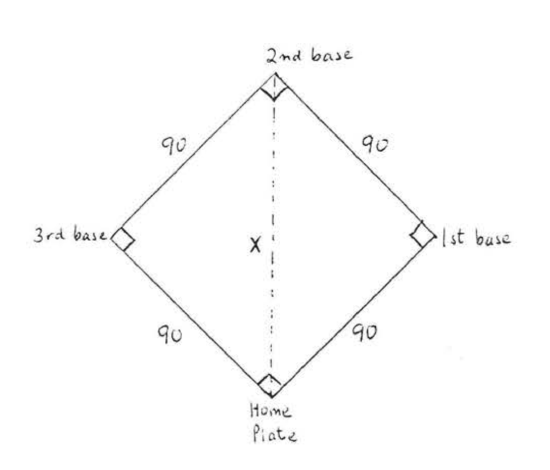4.4: Pythagorean Theorem
( \newcommand{\kernel}{\mathrm{null}\,}\)
In a right triangle, the sides of the right angle are called the legs of the triangle and the remaining side is called the hypotenuse. In Figure 4.4.1, side AC and BC are the legs and side AB is the hypotenuse.
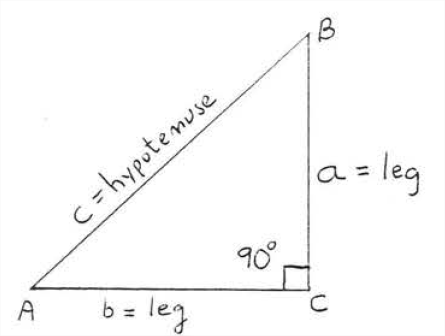
The following is one of the most famous theorems in mathematics.
In a right triangle, the square of the hypotenuse is equal to the sum of the squares of the legs. That is,
leg2+leg2=hypotenuse2
Thus, for the sides of the triangle in Figure 4.4.1,
a2+b2=c2
Before we prove Theorem 4.4.1, we will give several examples.
Find x
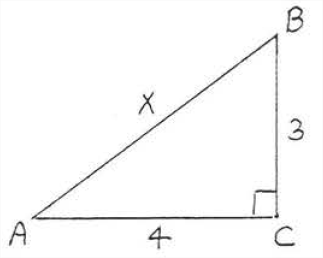
Solution
leg2+leg2=hyp232+42=x29+16=x225=x25=x
Check:
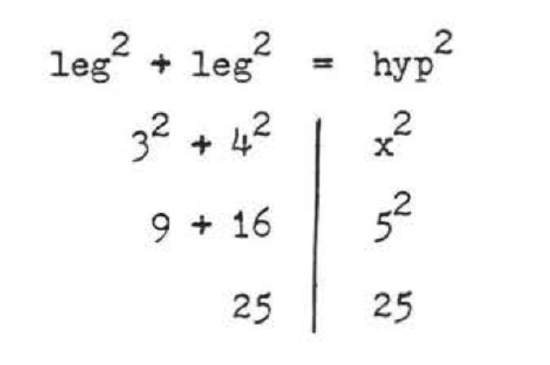
Answer: x=5.
Find x:
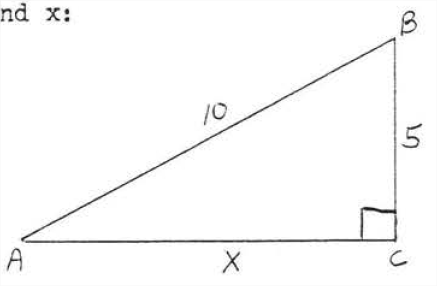
Solution
leg2+leg2=hyp252+x2=10225+x2=100x2=75x=√75=√25√3=5√3
Check:

Answer: x=5√3.
Find x:
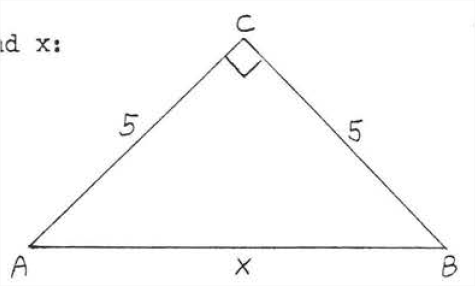
Solution
leg2+leg2=hyp252+52=x225+25=x250=x2x=√50=√25√2=5√2
Check:
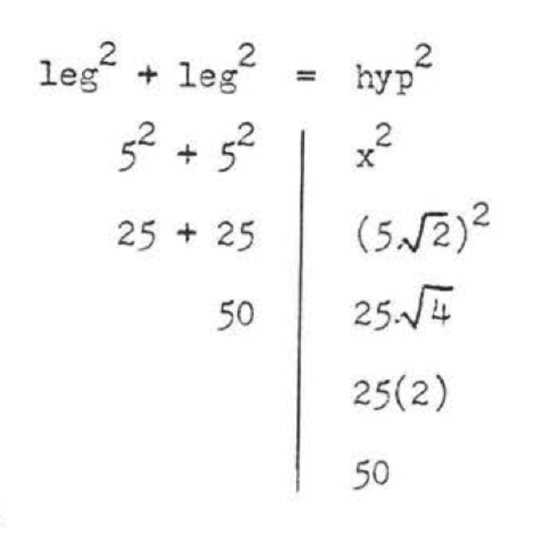
Answer: x=5√2.
Find x
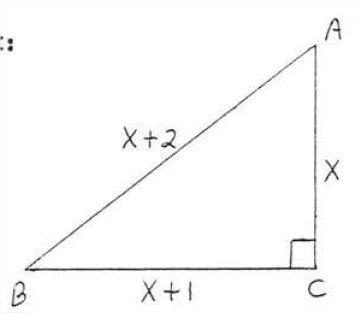
Solution
leg2+leg2=hyp2x2+(x+1)2=(x+2)2x2+x2+2x+1=x2+4x+4x2+x2+2x+1−x2−4x−4=0x2−2x−3=0(x−3)(x+1)=0
x−3=0x=3 x+1=0x=−1
We reject x=−1 because AC=x cannot be negative.
Check, x=3:

Answer: x=3.
We will now restate and prove Theorem 4.4.1:
In a right triangle, the square of the hypotenuse is equal to the sum of the squares of the legs. That is,
leg2+leg2=hypotenuse2.
In Figure 4.4.1,
a2+b2=c2.
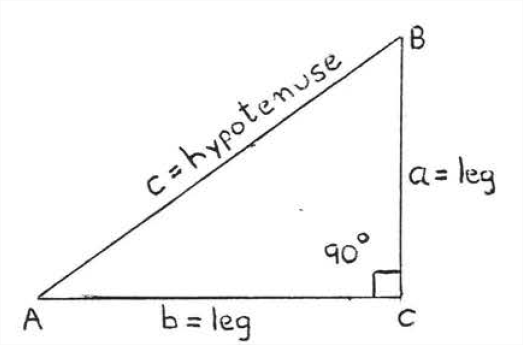
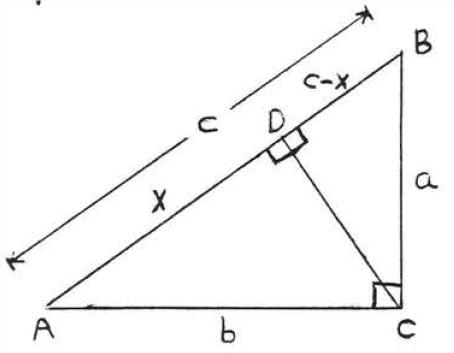
- Proof
-
In Figure 4.4.1, draw CD perpendicular to AB. Let x=AD. Then BD=c−x (Figure 4.4.2). As in Example 4.4.3, section 4.2, △ABC∼△ACD and △ABC∼△CBD. From these two similarities we obtain two proportions:
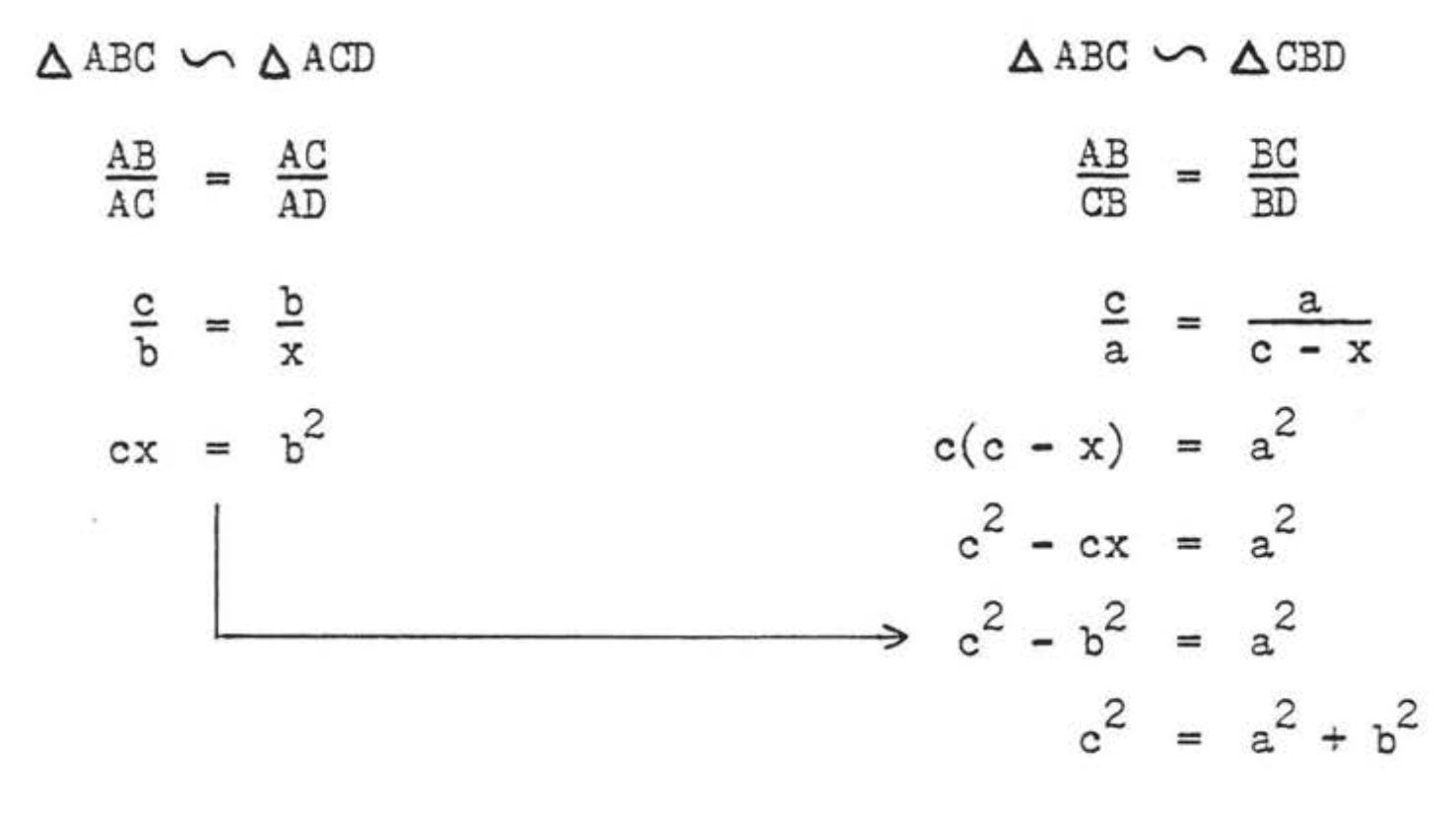
The converse of the Pythagorean Theorem also holds:
In a triangle, if the square of one side is equal to the sun of the squares of the other two sides then the triangle is a right triangle.
In Figure 4.4.3, if c2=a2+b2 then △ABC is a right triangle with ∠C=90∘.
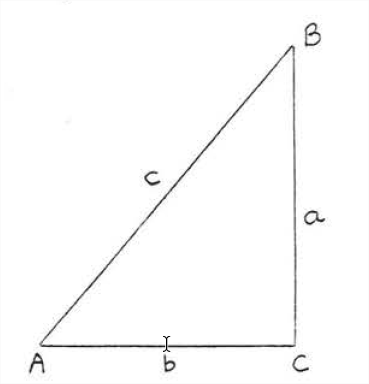
- Proof
-
Draw a new triangle, △DEF, so that ∠F=90∘, d=a, and e=b (Figure 4.4.4). △DEF is a right triangle, so by Theorem 4.4.1, f2=d2+e2. We have f2=d2+e2=a2+b2=c2 and therefore f=c. Therefore △ABC≅△DEF because SSS=SSS. Therefore, ∠C+∠F=90∘.
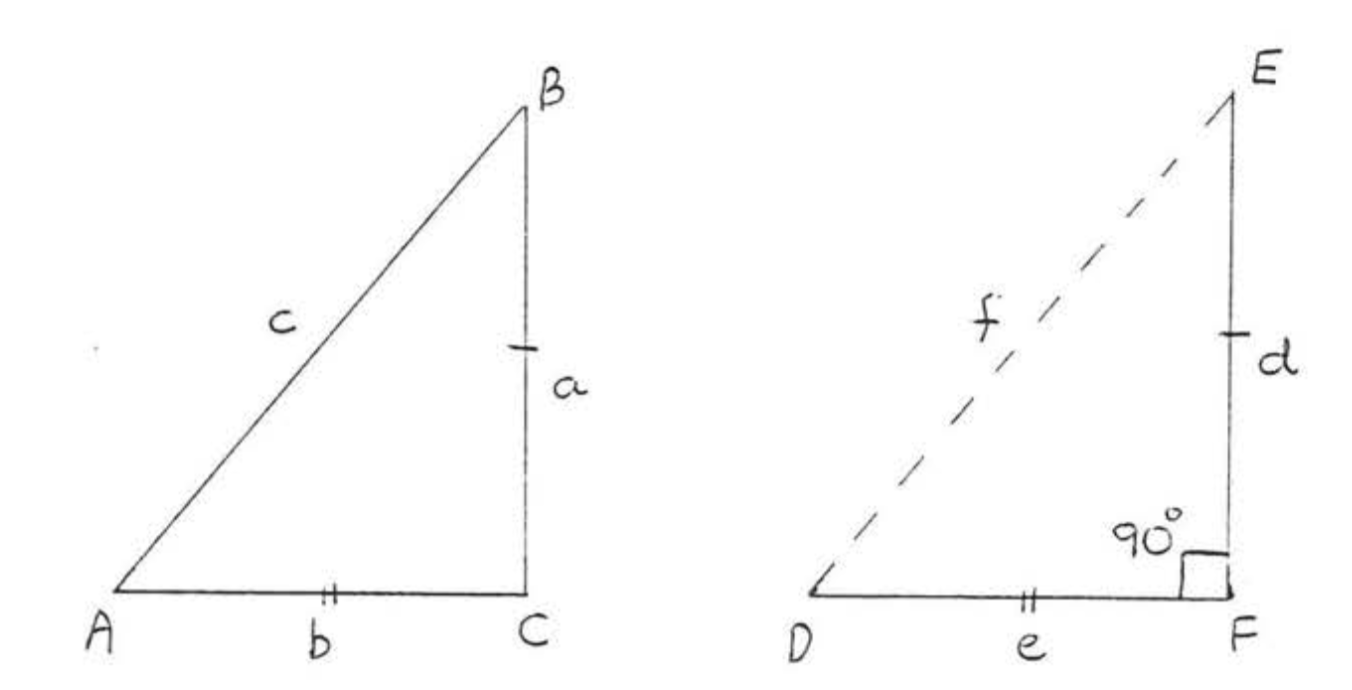
Figure 4.4.4: Given △ABC, draw △DEF so that ∠F=90∘, d=a and e=b.
Is △ABC a right triangle?
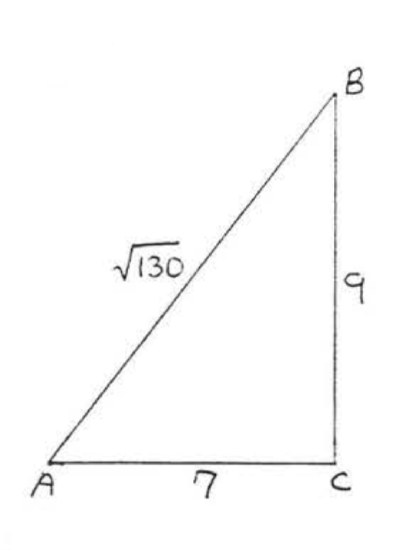
Solution
AC2=72=49
BC2=92=81
AB2=(√130)2=130
49+81=130.
so by Theorem 4.4.2, △ABC is a right triangle.
Answer: yes.
Find x and AB:
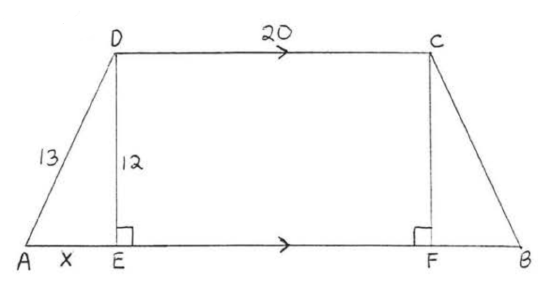
Solution
x2+122=132x2+144=169x2=169−144x2=25x=5
CDEF is a rectangle so EF=CD=20 and CF=DE=12. Therefore FB=5 and AB=AE+EF+FB=5+20+5=30.
Answer: x=5, AB=30.
Find x, AC and BD:
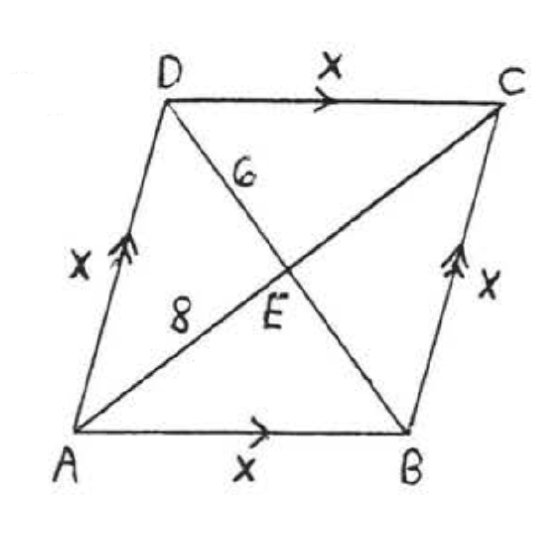
Solution
ABCD is a rhombus. The diagonals of a rhombus are perpendicular and bisect each other.
62+82=x236+64=x2100=x210=x
AC=8+8=16,BD=6+6=12.
Answer: x=10,AC=16,BD=12.
A ladder 39 feet long leans against a building, How far up the side of the building does the ladder reach if the foot of the ladder is 15 feet from the building?
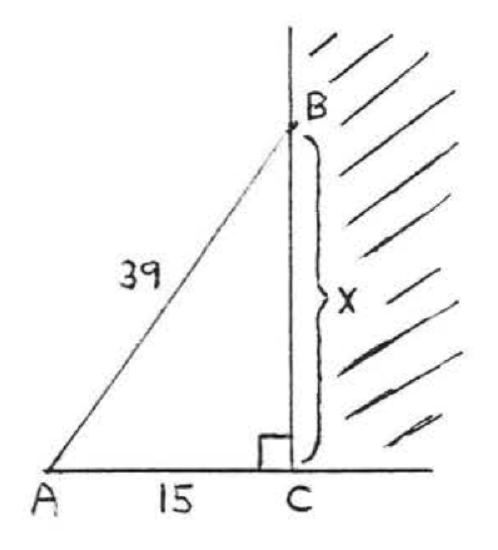
Solution
leg2+leg2=hyp2x2+152=392x2+225=1521x2=1521−225x2=1296x=√1296=36
Answer: 36 feet.
Pythagoras (c. 582 - 507 B.C.) was not the first to discover the theorem which bears his name. It was known long before his time by the Chinese, the Babylonians, and perhaps also the Egyptians and the Hindus, According to tradition, Pythagoras was the first to give a nroof of the theorem, His proof probably made use of areas, like the one suggested. In Figure 4.4.5 below, (each square contains four congruent right triangles with sides of lengths a, b, and c, In addition the square on the left contains a square with side a and a square with side b while the one on the right contains a square with side c.)
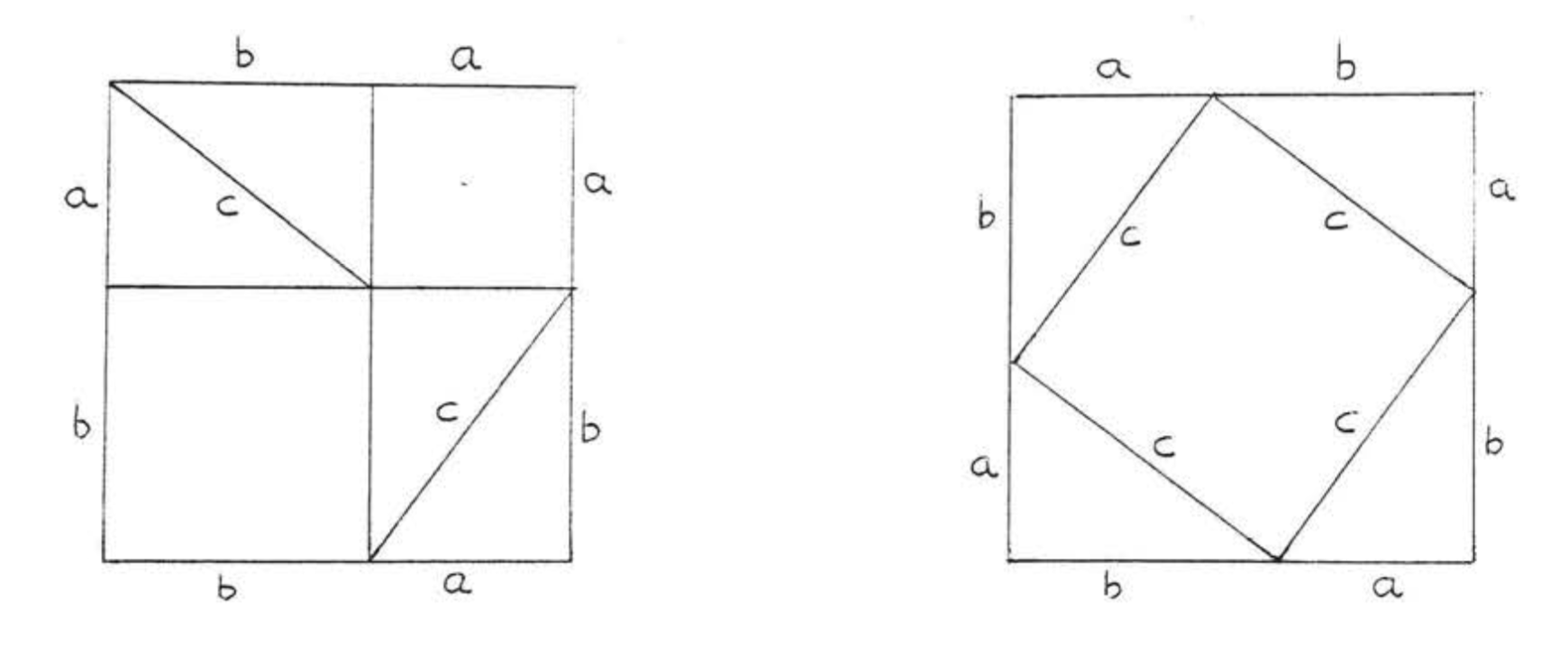
um theorem for triangles, the properties of parallel lines, and the theory of similar triangles and proportions.
Problems
1 - 10. Find x. Leave answers in simplest radical form.
1.
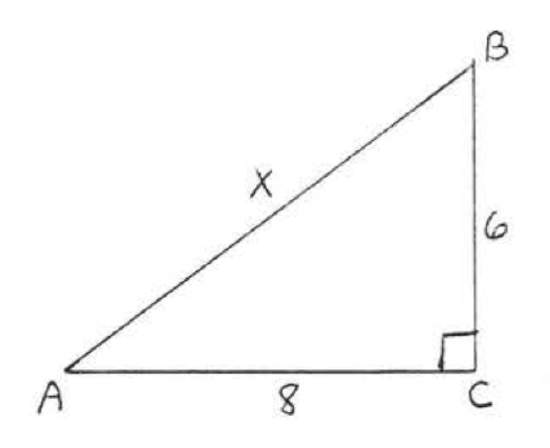
2.
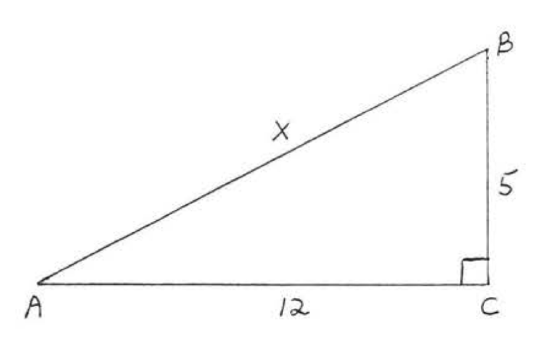
3.

4.
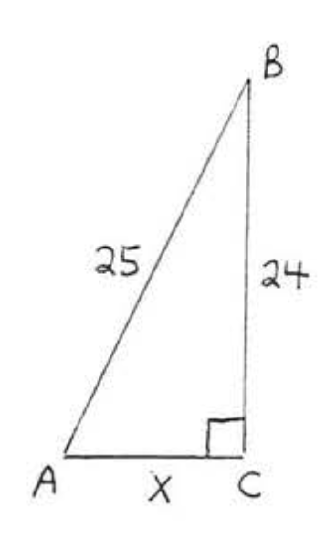
5.
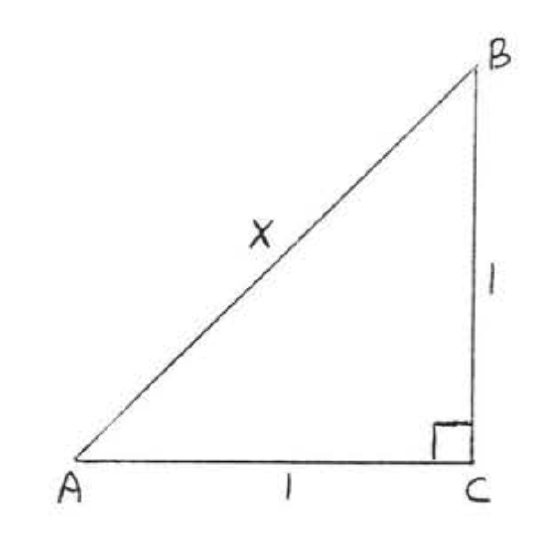
6.
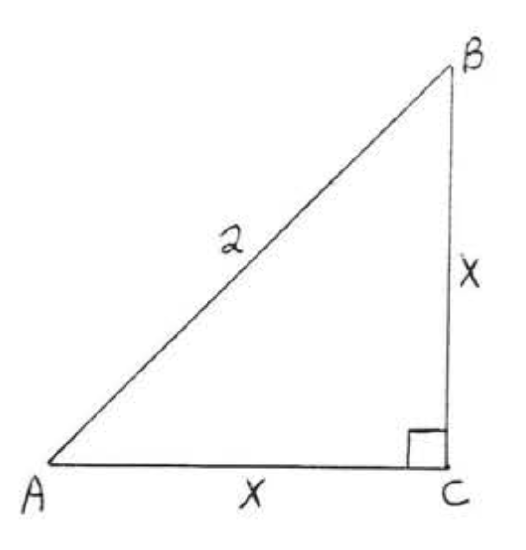
7.
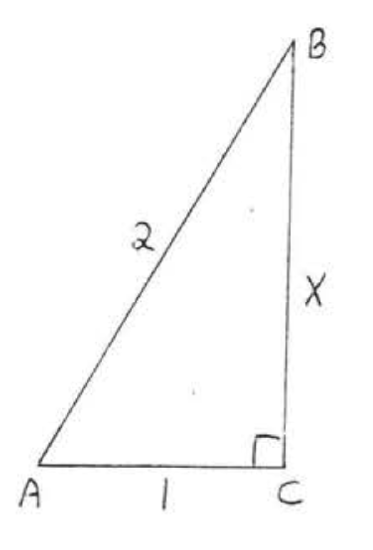
8.
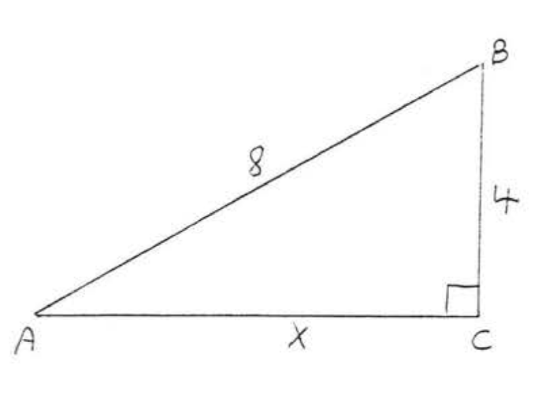
9.
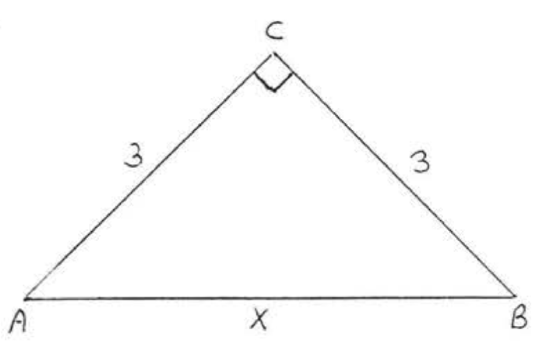
10.
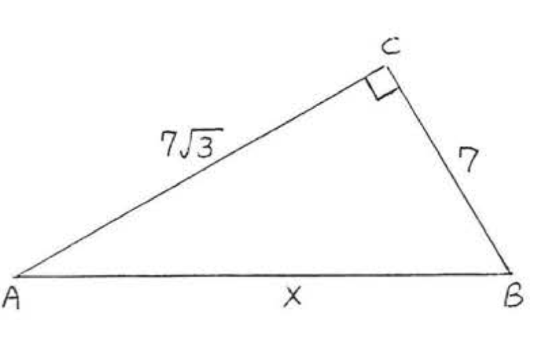
11 - 14. Find x and all sides of the triangle:
11.
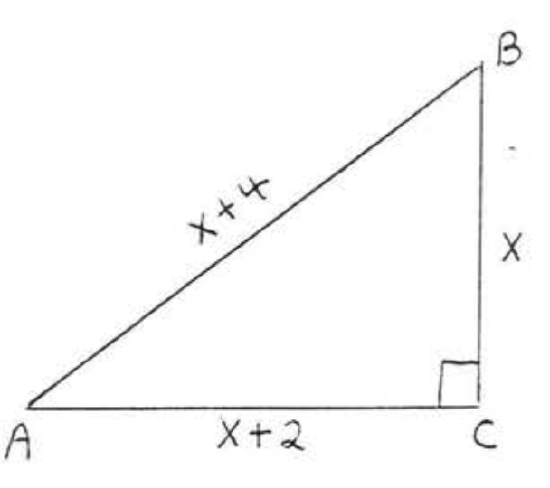
12.

13.
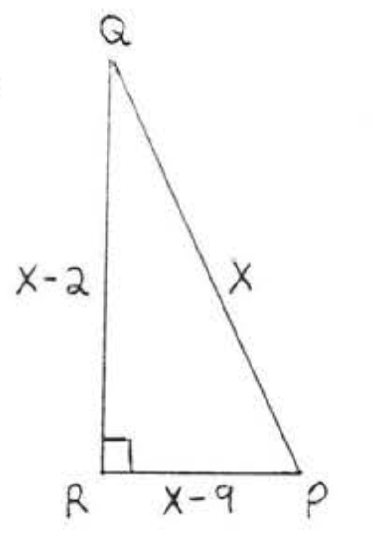
14.
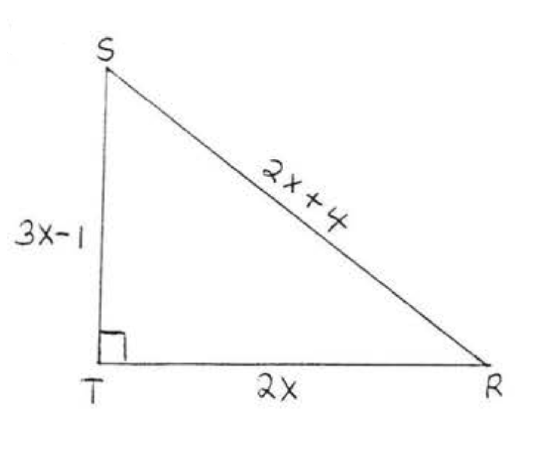
15 - 16. Find x:
15.
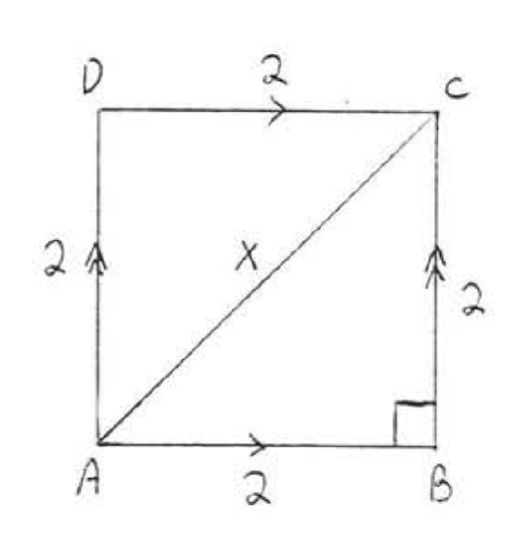
16.
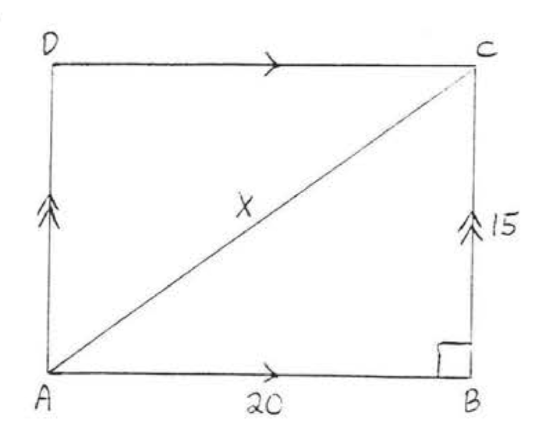
17. Find x and AB.
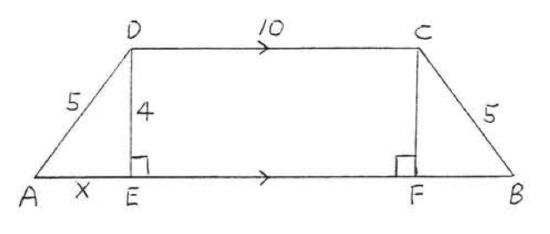
18. Find x:
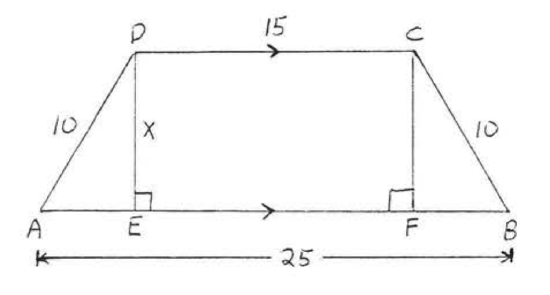
19. Find x,AC and BD:
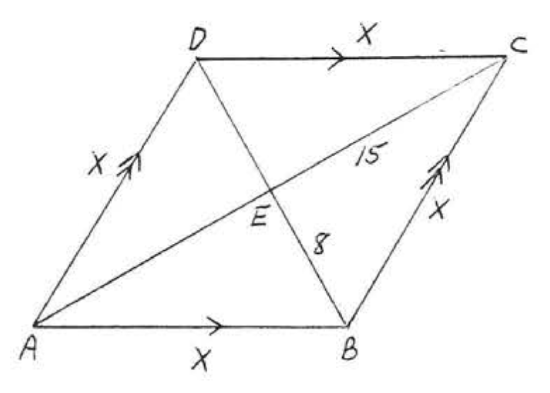
20. Find x,AC and BD:
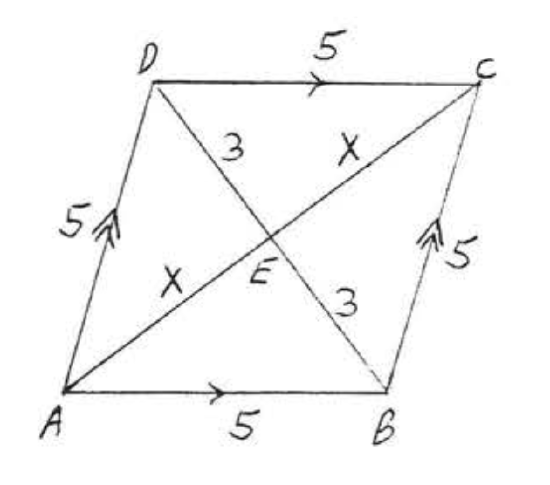
21. Find x and y:
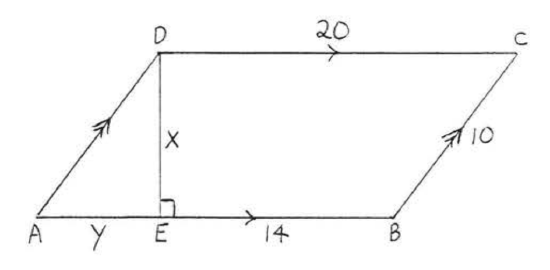
22. Find x, AC and BD:
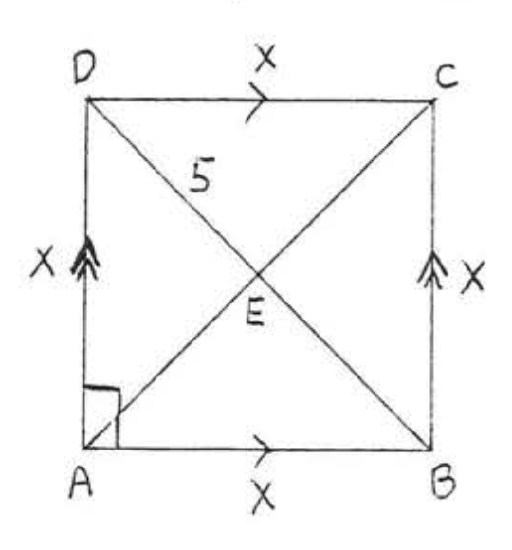
23. Find x,AB and BD:
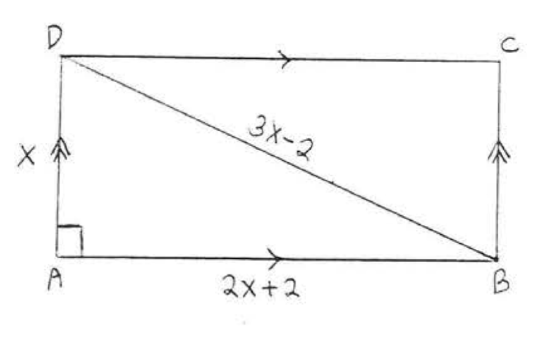
24. Find x,AB and AD:
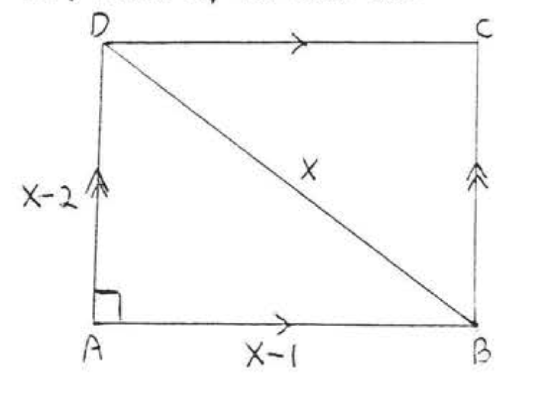
25 - 30. Is △ABC a right triangle?
25.
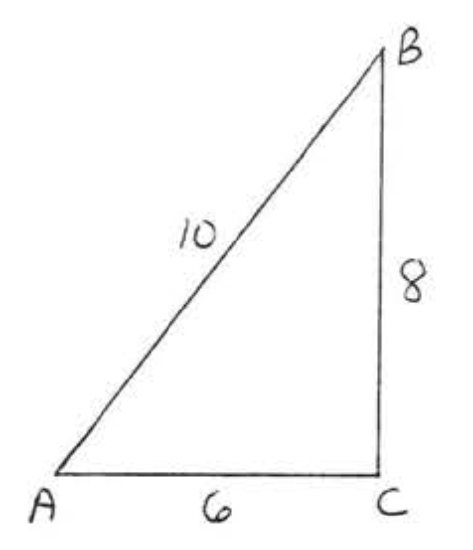
26.
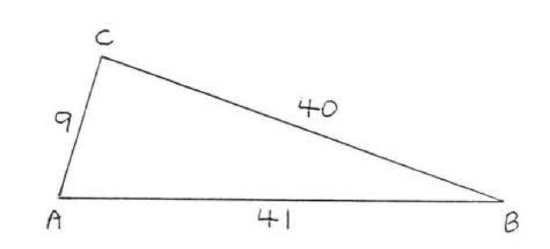
27.
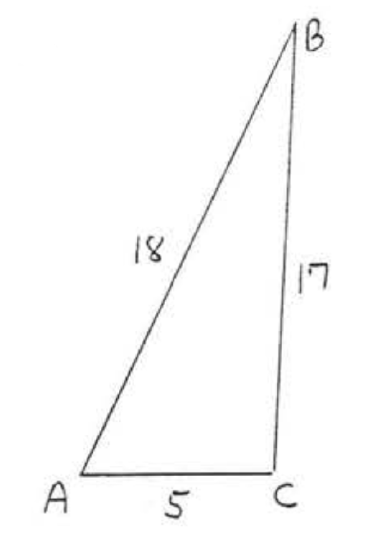
28.
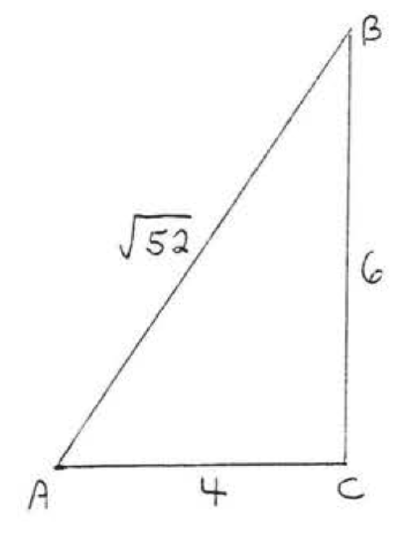
29.
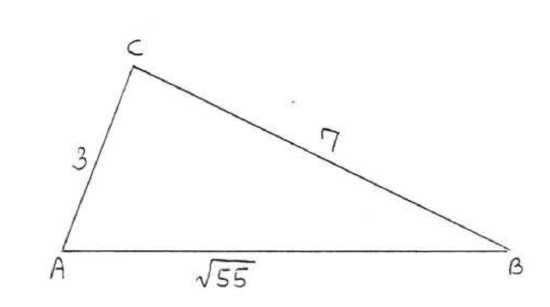
30.
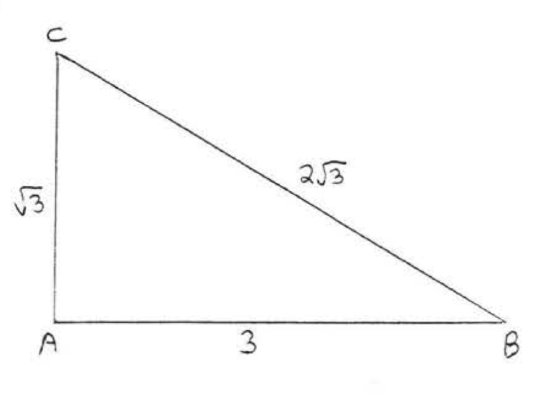
31. A ladder 25 feet long leans against a building, How far up the side of the building does the ladder reach if the foot of the ladder is 7 feet from the building?
32. A man travels 24 miles east and then 10 miles north. At the end of his journey how far is he from his starting point?
33. Can a table 9 feet wide (with its legs folded) fit through a rectangular doorway 4 feet by 8 feet?
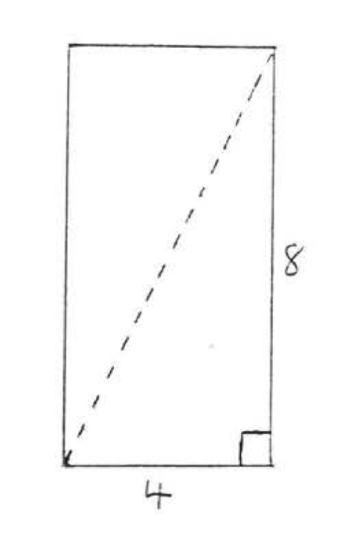
34. A baseball diamond is a square 90 feet on each side, Find the distance from home plate to second base (leave answer in simplest radical form).
